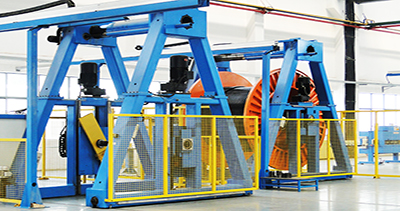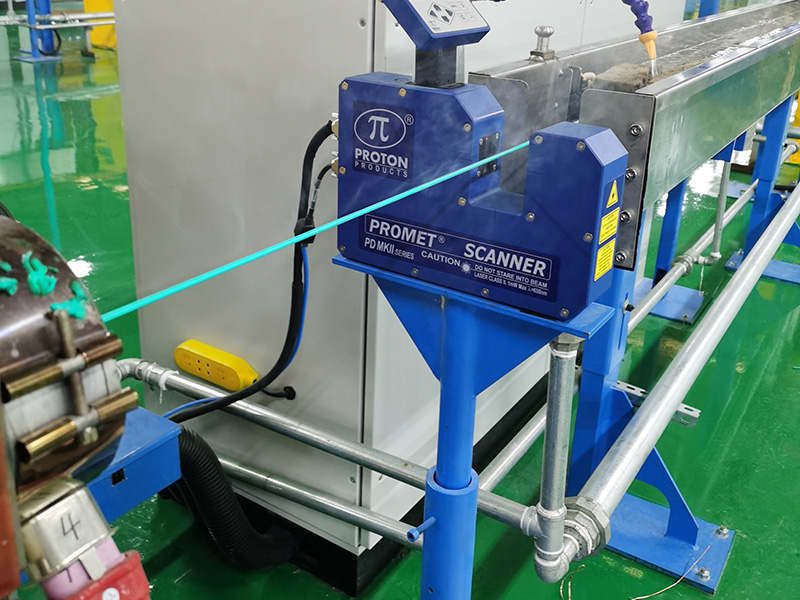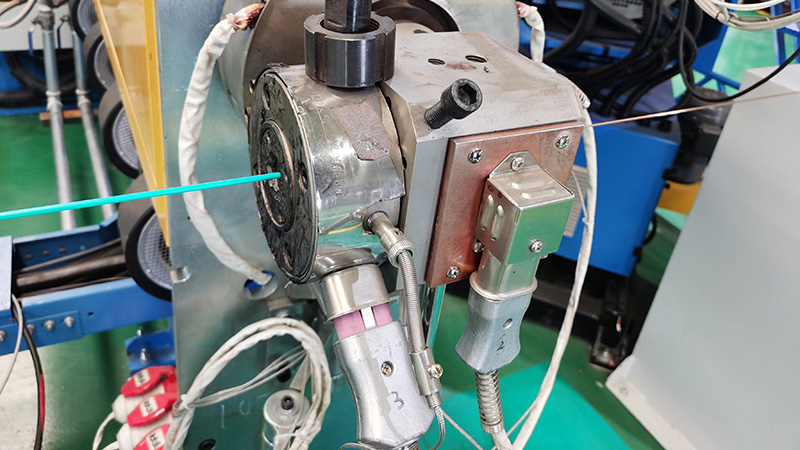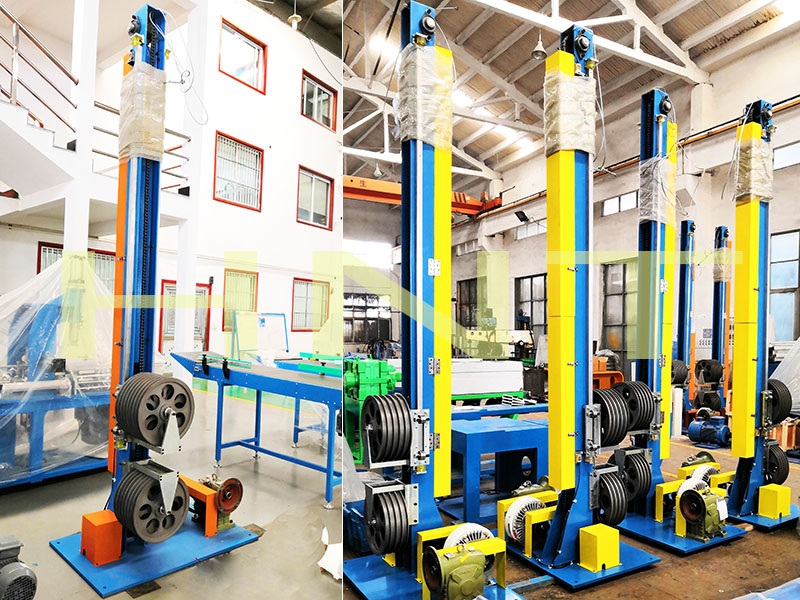The purpose of the payoffs used in insulating lines is to provide a continuous supply of wire to the downstream machinery. Wire may be paid off from stands from which wire is uncoiled or from reels either driven or undriven.
Single conductor and tandem insulating line payoffs are often undriven. When this is the case, wire is simply pulled from the supply reel and a friction brake is used to maintain tension during line operation. The brake aids in line deceleration by applying braking torque to the reel.
Electrically set mechanical brakes are also suited for this purpose. The magnetic brake maybe used particularly when high brake torque is required. Disadvantages are: cost-this arrangement is more expensive-and the torque capacity drops to zero at zero speed.
When line speeds increase or reel increase and reel inertias become high, driven payoffs are usually selected. These conditions can be present in some single and tandem insulating lines and CV Lines. Under these conditions, the drive must be capable of motoring or driving the reel in the forward position or of providing negative torque or braking during line speed changes or reel deceleration. Jog forward and jog reverse are also required for set-up purpose.
A dancer position control is used to provide a degree of isolation between the payoff reel and downstream machine. With a dancer position control arrangement, the drive regulates the position of a dancer loop supported by the wire. Tension is established by the mechanical design of the dancer roll stand. The drive must then provide either position or negative torque to the reel depending on the movement of the dancer.
This application requires a regenerative DC drive which provides both motoring (Positive torque) and regeneration (Negative torque) to the reel.
Higher line speeds and smaller dancer storage capacity increase the necessity of a responsive DC regenerative drive. The fact that the DC regenerative drive can also maintain stall tension further justifies its use.




